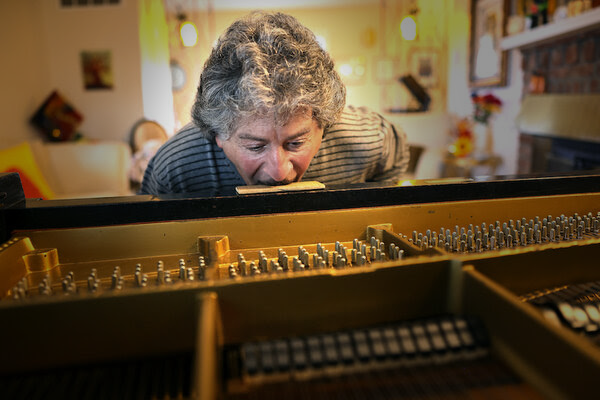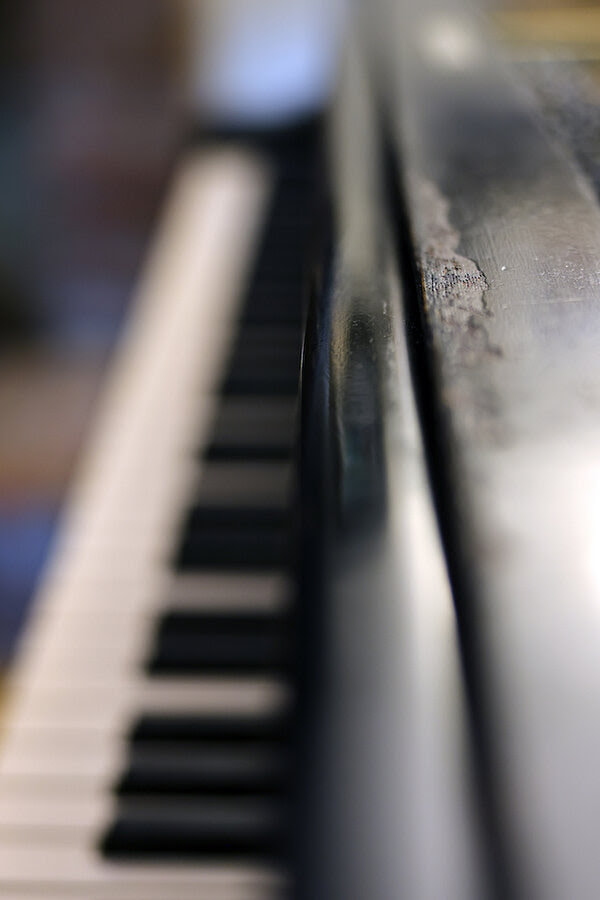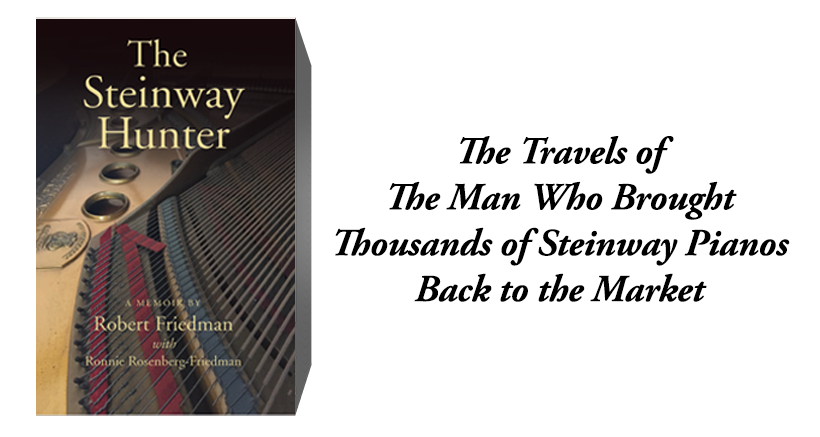 Bob Friedman, "THE STEINWAY HUNTER," at the Edison Grand. Photo by James Barron
Bob Friedman, "THE STEINWAY HUNTER," at the Edison Grand. Photo by James Barron
Thomas Edison dreamed up all those inventions everybody knows about. He also devised a singular method of taking in the sound from his piano. He bit the instrument as it was being played.
Edison was so deaf that he would put his mouth on the piano and chomp down. This let him feel the vibrations of the sound.
He apparently left his marks on at least one of his pianos — a Steinway grand that he owned for not quite 40 years. It still has toothy little indentations.
I remembered the story about gnawing the piano from “Edison,” the biography by Edmund Morris that was published in 2019. “I hear through my teeth,” Edison said. “I bite my teeth into the wood, and then I get it good and strong.” Morris wrote that this was “difficult to do without slobbering” and that some of Edison’s phonographs — he sank his teeth into them, too — “looked as if they had been savaged by an enormous rodent.”
 The toothy indentations in the wood of the piano. Photo by James Barron
The toothy indentations in the wood of the piano. Photo by James Barron
Edison paid $725 for the Steinway, a Model B, in June 1890. Like many pianos from that era, it has only 85 keys. Steinway stopped making Model Bs with 85 notes in 1892, a year after it had added an 88-note version, the forebear of the Model B that is still in its product lineup.
Edison’s piano was sold in 1929 and changed hands a few times over the years. Its current owner — Robert Friedman, who after more than 40 years in the piano business calls himself “the Steinway Hunter” — bought it in January, unseen, unplayed and unaware.
It was unseen and unplayed because he was in Florida and it was in an estate sale on Long Island.
He was unaware of how Edison had coped with his deafness. He knew only that the piano had once belonged to Edison — there was paperwork to establish its provenance. He said he paid just under $45,000 — far more than if its past had not included Edison, he said — and sent it to a piano technician in Yonkers, N.Y., to re-regulate the hammers, “to get it playing nicer.”
No one told him that the lock rail, the strip of wood above the keys, looked a bit battered.
Friedman mentioned his purchase to his friend Charles Frommer, a musician and Edison aficionado who has a collection of Edison phonographs. When Frommer stopped by to tune it for Friedman, “he stood over the piano and he looked down and said, ‘Those are Edison’s bite marks,’” Friedman said. “It almost felt like Edison was in the room.”
I can’t say that I felt Edison’s presence when I visited Friedman the other day in New Paltz, N.Y., and asked if he had listened to the piano the way Edison did. He obligingly bit down after Frommer slipped a small piece of wood over the bite marks so that Friedman’s teeth did not touch them.
“I could feel the tone,” Friedman reported after playing a few notes. He called the sensation “weird,” saying it felt “kind of like your whole head was a tuning fork.”
Friedman has not had the bite marks tested for DNA — who knows if any of Edison’s genetic material remains?
But his wife, Ronnie Rosenberg-Friedman, had no doubts.
“I used to be a dental hygienist,” she said. “Those are definitely incisors.”
Like what you see? Read the book!

